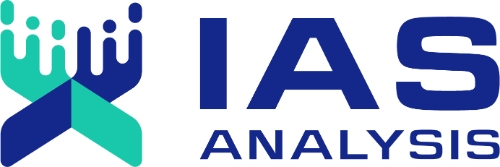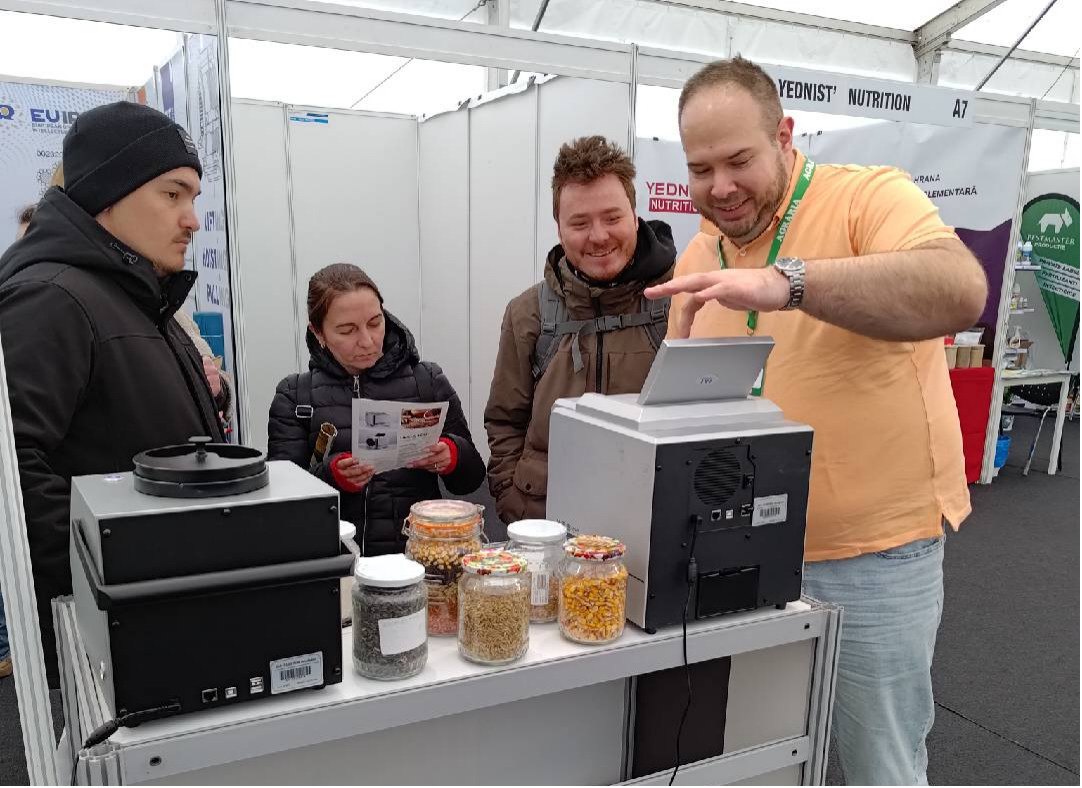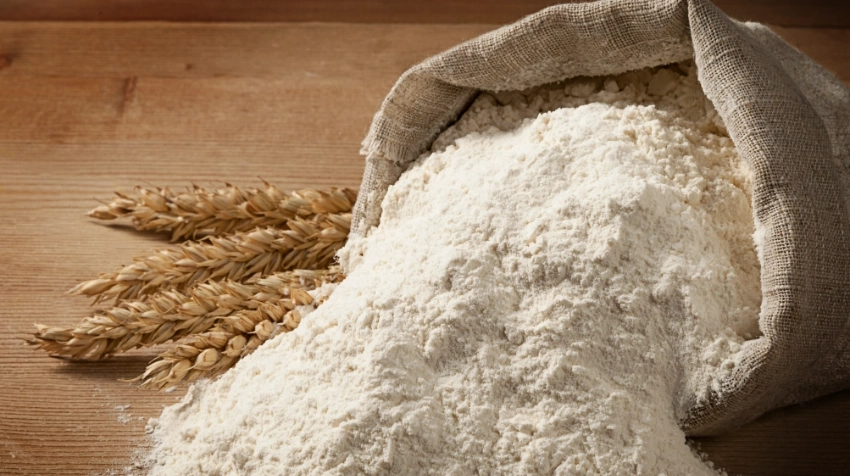IAT NIR Grain Analyzer: The Expert in Rapid Quality Testing for Grains and Cereals
Grains and cereals are the primary sources of energy for humans and are deeply integrated into our daily lives. Wheat, for example, is one of the world’s top three grains and serves as a vital staple, rich in carbohydrates, proteins, and essential micronutrients. Before wheat kernels are milled into flour for products like bread, biscuits, and other foods, it is essential to rigorously access their quality. This step ensures that subsequent processing meets high standards.
Wheat kernels are tested for moisture content, protein levels, gluten strength, amino acid composition, starch content, and any imperfections, which are crucial factors in determining their suitability for storage and processing. The characteristics of wheat determine its best use—hard wheat and high-protein varieties, known for their strong gluten, are ideal for bread and fermented products due to their ability to provide structure and stability. Meanwhile, soft wheat and low-protein varieties are better suited for cakes, cookies, and noodles. For both farmers and buyers, evaluating wheat quality using these key indicators ensures fair pricing and optimal utilization. The IAT Near-Infrared Grain Analyzer is the preferred tool for making these essential assessments with speed and precision, empowering you to make informed decisions that benefit the entire supply chain.

There are various methods for assessing the quality of wheat kernels, but many chemical and physical approaches require sample pre-treatment and the use of the toxic reagents. For instance, protein analysis often relies on the Kjeldahl method, which takes 5-6 hours per test. Due to the size of the equipment and the large number of chemical reagents needed, these tests can only be performed in a laboratory setting. This creates significant limitations in terms of both time and location, making it challenging to meet the needs for rapid on-site testing and pricing during the procurement process.
Similarly, testing for gluten quality, such as manual gluten washing, can lead to substantial variations in results—up to 2 percentage points or more depending on the operator’s technique. As a result, laboratory testing methods require highly skilled personnel and stable equipment. However, the reliability of these tests is often compromised by human error, equipment variability, and methodological differences. Therefore, there is a critical need for a portable, fast, non-destructive, accurate, and highly repeatable testing device to address the challenges faced during the procurement process, where wheat quality is frequently accessed based on variety, texture, and experience alone.
Near-infrared (NIR) spectroscopy has gained recognition as a leading technology for accessing wheat quality, largely due to its affordability, speed, precision, and non-destructive testing nature. This innovative method is extensively used across research settings and the grain industry to provide reliability quality assessments. Portable NIR grain analyzers are commonly employed to measure key parameters such as moisture, starch, and protein content in wheat kernels, offering valuable insights for optimizing storage conditions and facilitating the rapid classification of specialized wheat varieties.
Given the diverse quality assessment requirements at different stages of wheat processing— ranging from storage to milling to food production—there is a growing need to explore the current applications of NIR technology in wheat testing. Additionally, understanding the NIR’s effectiveness in detecting specific components within kernels is crucial for enhancing its utility and accuracy. As NIR continues to evolve, its role in improving efficiency and reliability of wheat quality assessment will only become more prominent, supporting the entire supply chain.
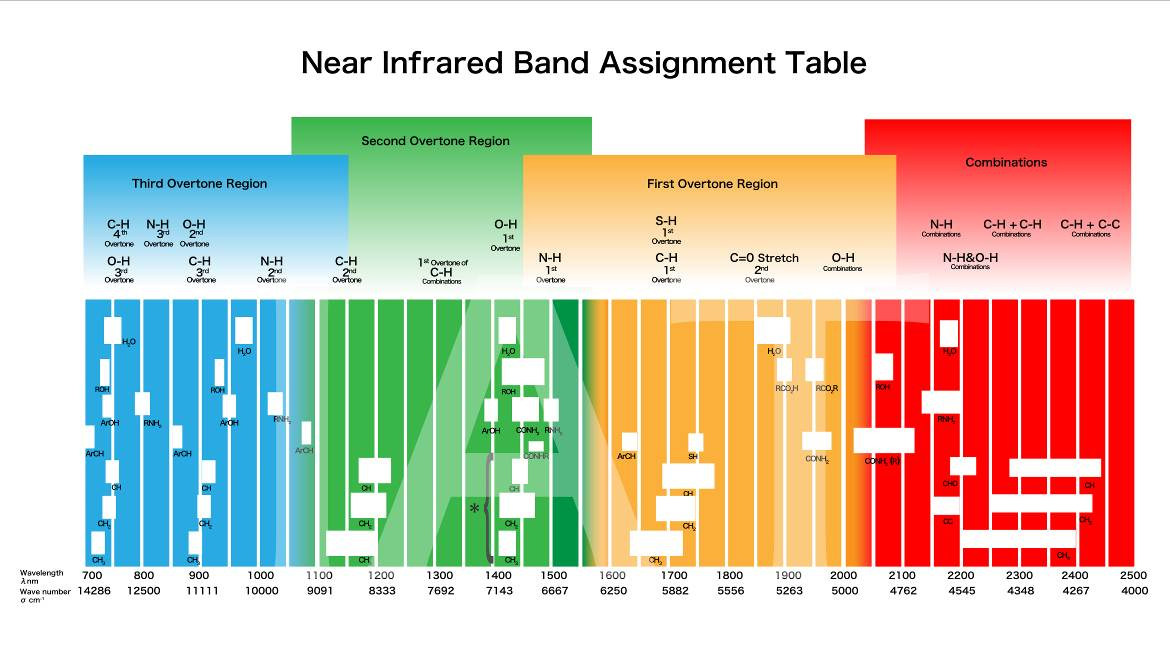
Near-infrared light (NIR) was the first non-visible light region to be discovered, with wavelengths that lie between the visible and mid-infrared regions, ranging from 780 to 2526 nm. In this wavelength range, substances containing hydrogen bonds (O-H, C-H, S-H, N-H, etc.) exhibit overtone and combination absorption. NIR spectroscopy measures a substance’s characteristic absorption in the near-infrared region to generate a spectrum that contains information about the sample. This technique is currently used mainly for the qualitative and quantitative analysis of organic compounds. While NIR signals are easy to obtain as those in the visible light spectrum, their weaker absorption in the infrared region and the presence of overlapping spectral bands, make them complex to interpret. The widespread adoption of NIR spectroscopy became possible with the development of advanced chemometric methods, which allowed for better analysis and interpretation. With its unique characteristics, NIR spectroscopy has become a valuable tool for its rapid, non-destructive testing capabilities and ability to measure multiple parameters without sample pre-treatment makes it ideal for quick and reliable grain and cereal testing, from quality control to food safety.
NIR spectrometers are the hardware that enables the application of NIR spectroscopy in determining wheat quality. Various types of NIR spectrometers are designed for specific applications. Dispersive and interferometric instruments are most commonly used NIR devices on the market. Interferometric spectrometers, typically Fourier Transform models, are high-end, expensive instruments best suited for precise laboratory analysis. Dispersive NIR instruments commonly used in production settings include fixed grating single-point or array detectors and acousto-optic tunable filter NIR spectrometers (AOTF-NIR). However, the core dispersing element in AOTF instruments is costly, making AOTF-based detection more expensive. Overall, fixed grating single-point or array detection spectrometers are more widely used.
IAT (SINGAPORE) TECHNOLOGY PTE. LTD. (IAT) is an innovative technology company specializing in NIR spectrometers and offering tailored industry solutions. Since its establishment, IAT has become a leading provider of professional NIR products and services by focusing on research and development, production, and sales. With significant R&D investments and a team where over 50% of its members hold a master's or doctoral degrees. To meet the strong demand for portable, fast, and cost-effective quality testing in grain and agricultural product procurement, IAT has utilized MEMS technology along with a fixed grating + DMD micro-mirror array and a single-point detection approach. This approach led to the development of the IAS-5100 Portable NIR Grain Analyzer, designed to meet the needs of modern agricultural quality control efficiently.

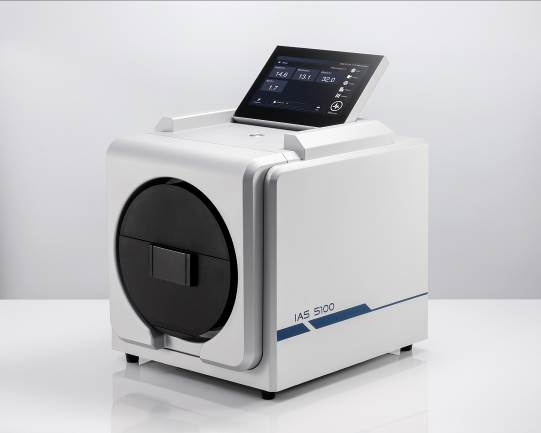
IAS-5100 Portable NIR Analyzer
The IAS-5100 features an innovative side-illumination diffuse reflection mixing device that enhances the accuracy of granular sample analysis by three times, ensuring reliable results that both buyers and sellers can trust for fair transactions and profitable decisions. Its intuitive touch screen and one-click analysis function allow users to perform tests easily without needing professional training. Compact, lightweight, and battery-powered, the IAS-5100 is ideal for use at procurement sites, in vehicles, or in the field. Its extensive detection database, developed from years of sample data, guarantees precise and accurate analysis. The IAS-5100 primarily measures moisture, protein, gluten, and ash content in wheat, making it well-suited for classification, grading, and pricing in wheat procurement.
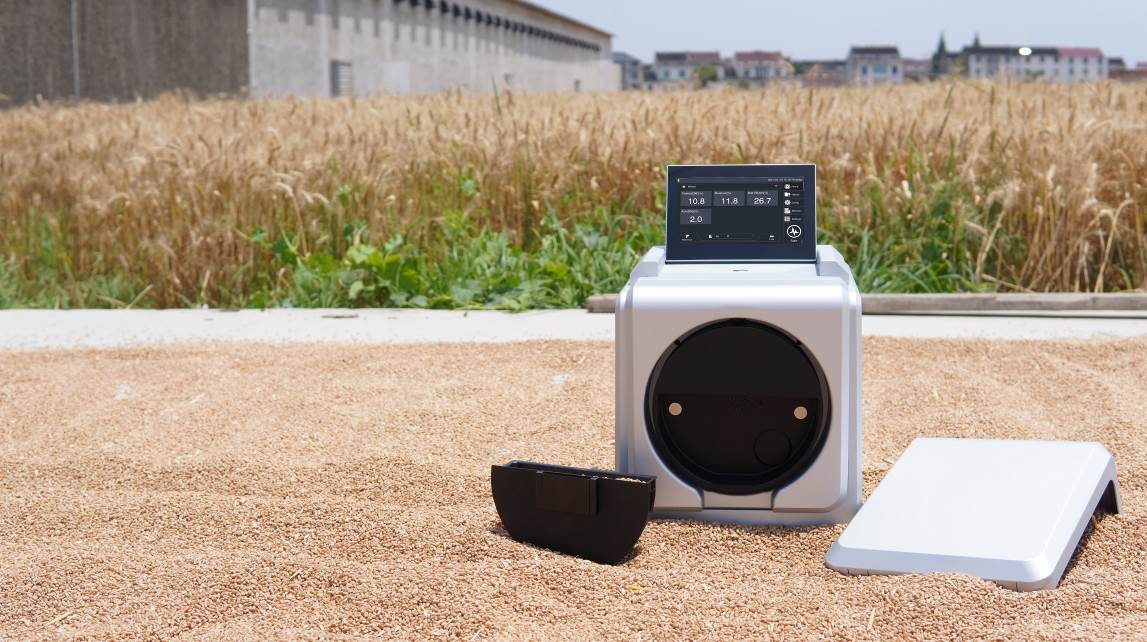
Moisture content in wheat kernels, defined as the ratio of water mass to total kernel mass, is critical for processing, transportation, and storage. The optimal moisture level is achieved by drying the grain just below the threshold where microorganisms can thrive, ensuring safer storage and better preservation of freshness, edibility, germination rate, and seed quality. Excess moisture leads to wasted capacity and increased enzyme activity, causing nutrient breakdown, higher temperatures, and issues like mold growth and insect infestation. Conversely, too little moisture can make kernels brittle, affecting food quality and seed viability. Thus, accurate measurement and control of moisture content are essential throughout the grain storage and transportation process.
Given this, using near-infrared (NIR) spectroscopy for detection during grain transportation and storage is of significant importance. The IAS-5100, developed by IAT, is portable and compact, making it well-suited for detection during transportation and storage. As society advances, there is an increasing demand for automation and unmanned operations in transportation and storage. To meet this need, IAT has developed a spectrometer designed for convenient online real-time detection, utilizing a fixed grating + array detector technology. This enables detection times as short as milliseconds per sample, fulfilling the needs for online real-time detection. The system can also be customized according to specific operating conditions, including explosion-proof requirements, probe design, and multi-unit detection solutions.
Grain analysis primarily focuses on the detection of nutritional components. The IAS-5100 is designed for large-grain crops, including not only wheat but also soybeans, rapeseed, sunflower seeds, rice, and paddy. The main detection indicators include moisture, protein, fat, starch, ash, and acid value, all of which are crucial for quality control. IAT boasts a professional and experienced application team that regularly updates grain models to meet the detection needs of more varieties, broader regions, and different harvest years. Additionally, customized model development is available to meet specific customer requirements.
The development of NIR spectroscopy instruments is evolving to offer a greater stability, reliability, and speed. In industrial production setting, integrating NIR online detection with optical fibers and the internet enables real-time product quality monitoring, offering a precise solution for quality control. In grain analysis, the application of NIR technology in quality assessment has significantly improved production efficiency and product quality, contributing to a safer grain storage and improved food safety.
As living standards and nutritional demands continue to rise, specialized grains, such as nutrient-rich colored, are becoming more prevalent. These grains contain higher levels of anthocyanins, carotenoids, and other nutrients compared to regular wheat, making them more nutritious and visually appealing. However, the presence of these pigments can affect NIR absorption spectra, leading to significant deviations in measurements of quality indicators like starch, protein, and moisture. Therefore, optimizing NIR equipment or predictive models to improve the quality assessment of such specialized wheats is of great importance.
IAT is dedicated to the continuous development of NIR spectroscopy instruments and model development to meet the market needs. By embracing current opportunities and driving innovations, IAT is committed to advancing the global NIR industry.
Source:https://millermagazine.com/blog/ensuring-optimal-grain-quality-the-future-of-wheat-testing-5849
